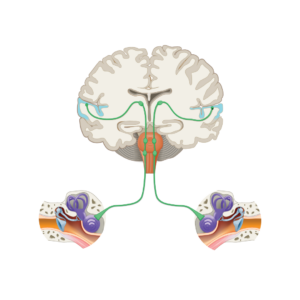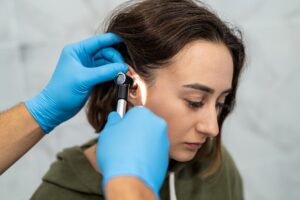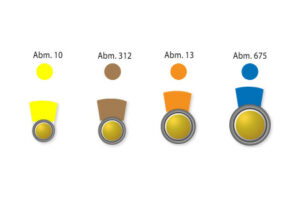Conductive Hearing Loss
Conductive hearing loss occurs when there is an impairment in the transmission of sound through the outer or middle ear. Common causes include earwax (cerumen) blocking the outer ear canal, a perforated eardrum, a fused ossicular chain (the tiny bones in the middle ear), or middle ear infections. Conductive hearing loss is often temporary and can be treated medically or surgically by an ENT (ear, nose, and throat) specialist. If hearing loss persists after successful treatment, hearing aids can help restore typical hearing function. For this, a visit to a hearing care professional is necessary.
Sensorineural Hearing Loss
Sensorineural hearing loss occurs when the inner ear or the auditory nerve pathways are damaged. This type of hearing loss is the most common and is typically caused by prolonged exposure to loud noise or age-related degeneration. It usually develops gradually and is permanent. However, sensorineural hearing loss can often be compensated for with hearing aids. To address sensorineural hearing loss effectively, collaboration with an ENT doctor and a hearing care professional is required.
In cases where hearing loss is severe and traditional hearing aids are no longer effective, hearing implants can provide a solution. These are typically fitted in clinics or by specialized hearing care professionals.
Central Hearing Loss
Central hearing loss refers to a hearing impairment that originates in the higher auditory pathways or the auditory cortex of the brain. This type of hearing loss is rare and can be caused by conditions such as brain tumors, brain injuries, or brain hemorrhages.
Understanding the type of hearing loss is crucial for determining the most appropriate treatment, whether through medical intervention, hearing aids, or implants, to help individuals regain optimal hearing and quality of life.







